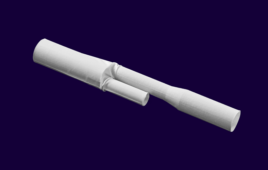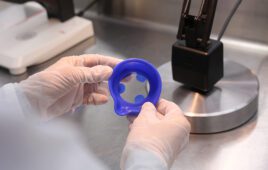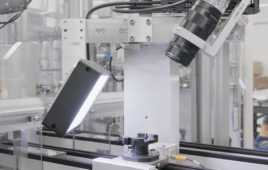
Understand the latest changes to IVDR and the impact for IVD manufacturers
By IQVIA MedTech
Approximately 70 percent of today’s medical decisions are dependent on lab-based diagnostic test results and related devices in use, regulatory authorities aim to further strengthen critical oversight on devices in development and use. In May 2017, the European Commission announced the new In Vitro Diagnostic Medical Device Regulation (IVDR) 2017/746 to improve the quality, safety and reliability of IVDs.
Replacing In Vitro Diagnostic Directive (IVDD) 98/79/EC that have been in place for more than 20 years, the updated regulation gave IVD manufacturers a five-year transition period to ensure compliance, whether it be for a currently available IVD or for those in development. Changes and updates were to be fully applicable on May 26, 2022 in the European Union. However, in October 2021, the European Commission proposed a tiered roll out of the IVDR, given obvious delays faced by the COVID-19 pandemic and other dominating challenges for IVD manufacturers to make necessary updates. And, the fact that not all the necessary pieces of the IVDR puzzle are in place yet was also a factor for the updated timeline. The regulation of the European Parliament of the Council amending regulation (EU) 2017/746 as regards transitional provisions for certain in vitro diagnostic medical devices and the deferred applications of conditions for in-house devices was published in the Official Journal (OJ) of the European Union on January 25, 2022.
As it stands now, the IVDR will be fully applicable on May 26, 2022, as previously stated when the new IVDR regulation was announced. However, many products will now be given a grace period to help comply with the regulation. Extended dates are dependent on the product’s risk classification.
While many manufacturers are given more time, understanding the need to better address patient safety concerns for IVDs and challenges to meeting compliance even with the extension, it is crunch time for the industry. Staying equipped with the latest in the regulatory landscape for IVDs and how to potentially navigate through the changes successfully in time for respective product deadlines is critical for manufacturers in the space.
IVDR: Notable Changes
In raising standards and increasing regulatory oversight of IVDs, what an IVD is and how they are classified are newly defined. Though the spectrum of IVD products (e.g., rapid diagnostic tests, blood glucose tests, genetic health risk tests, home use tests, etc.) under regulatory watch stays consistent from IVDD to IVDR, the degree of documentation and review of IVDs will significantly increase.
Overall, components of IVDR that will impact IVD development and commercialization are fairly extensive and game-changing for manufacturers:

- To regulate the medical device market, there is a need to classify IVD medical devices based on the potential risk it poses to patients and users. A new risk classification system will designate products into four Classes i.e., Class A, B, C, and D. The regulatory controls are proportional to the level of risk associated with the IVD medical device class:
- Class D (highest risk): Covers life-threatening conditions and transmissible blood agents that are high risk to wider population and biological materials used in transplants
- Class C (moderate-to-severe risk): Covers high-risk IVDs that are of lesser risk to wider population but can be life-threatening
- Class B (moderate risk): Covers all IVDs that do not fall within other classifications and presents lower risk to patient and wider population than Classes D and C
- Class A (low risk): Covers lab devices, instruments, and specimen receptacles
- Requirement of Notified Body (NB) certification for conformity assessment procedures for all IVDs except those classified as Class A products
- Revised and increased requirements clinical evidence, including scientific validity, analytical performance and clinical performance
- New General Safety and Performance Requirements (GSPR) instead of Essential Requirement Checklist (ERC)
- In vitro diagnostic medical device software, the product must fulfil the definition of an in vitro diagnostic medical device according to Article 2(2) of Regulation 2017/746
- Traceability via UDI and more transparency via EUDAMED database
- A new definition of Companion Diagnostic (CDx) and the specific conformity assessment routes for these IVD products
- Compared to the IVDD, the IVDR places more emphasis on the life-cycle management and continuous evaluation of products. The IVDR requires manufacturers to show that they have an effective quality management system (QMS) in place causing changes in documentation for all products
- Implementation of thorough and proactive post-market surveillance (PMS) systems
Additionally, under the IVDR, there will be a push for increasing transparency in development and commercialization for IVD manufacturers, who will soon have to disclose efforts to reduce IVD risks to patients and work to develop, execute and maintain a risk management system.
Going beyond stronger surveillance through approval for use, updated regulations will impact post-market evaluations and related compliance assessments. And, as time is of the essence, manufacturers will need to put heavier (and rapid) focus on planning for efficient and effective regulatory and marketing strategies to meet IVDR requirements.
Interested in learning how the IVDR impacts your regulatory, quality, and risk management systems? Let the experts at IQVIA MedTech collaborate with your team and demonstrate effective strategies to prepare your products for the IVDR. Learn more at iqvia.com/MedTechClinical.
Sponsored content by IQVIA




